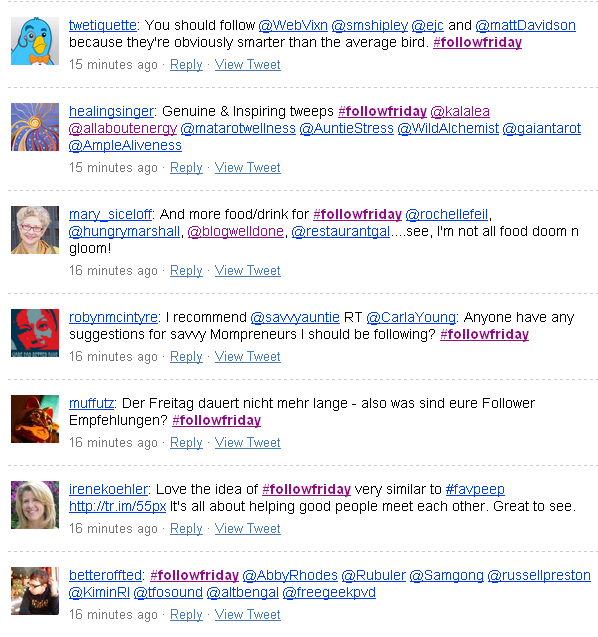This is a guest post from Jason Anthoine of workplace communications firm The Cohesion Group. It’s the result of an email Jason sent me asking whether I’d covered social media usage within organizations and a nice follow-on to an earlier post of mine looking at internal communication systems. I was intrigued by Jason’s email and asked him if he’d be interested in writing about it here. Enjoy.
Remember in high school how, as a freshman, you were relegated to the uncool tables where all the kids with braces, bad haircuts and square clothes sat? Freshmen weren’t allowed to mingle with the upperclassmen, even the sophomores, since they were still just kids.
In my job as an internal communications consultant, sometimes I feel as though I’m dealing with a whole bunch of freshmen all the time. Let me tell you why.
About four times a year I conduct a workshop through the Advanced Learning Institute about the impact social media is having on internal communications for companies and government agencies. I’ll be the first to admit I’m no expert when it comes to social media. But I know more than your average bear, I guess, especially as it pertains to internal communications, which is something I do know a good bit about.
One thing I do before the workshop is conduct a short survey of the participants to find out where they are on a social media scale. They rank themselves as being either a freshman, sophomore, junior, senior, teacher or principal. This gives them a chance to plant a flag in the ground about their own capabilities, and it gives me the opportunity to fine-tune the workshop based on their responses.
The vast majority of them rank themselves as freshmen. True, they probably wouldn’t be at the workshop if they were more advanced in their usage of social media at work. But this number has remained rather steady over the past couple of years I’ve been conducting this informal poll.
Mind you, these are, for the most part, mid-level to senior internal communicators at corporate and government positions, meaning they have roughly 15 years experience in communications. Most have direct line reporting structures to senior human resources, corporate communications or executive leadership positions. And most of them freely admit that they’re scared to death to go on Facebook and haven’t the slightest clue what Twitter is or does.
We spend the bulk of the morning’s time going over the basics of blogs, RSS, Facebook, podcasts, Twitter, Yammer, LinkedIn and wikis, as well as measurement of these tools. We also spend some time on the many open source tools that allow you to quickly create communities like Kick Apps and Ning.
Despite a slow and plodding pace, I feel as if I’m asking them to drink from a fire hose as we go down this list of social and new media basics. By the end, we’re all a bit exhausted and there are dozens of questions in addition to all the ones we’ve discussed along the way. We usually run out of time before we run out of need for time.
I’m afraid that these folks are the norm within most organizations. There are a few organizations that are doing social media internally very well, namely IBM, Nortel, Microsoft and British Telecom, among others. But most are still stuck with one-way, decidedly unsocial ways of communicating with their employees, i.e. newsletters, bulletin boards, email and static intranet sites. Of course, none of these tools are irrelevant. They may just be outdated as they are being used.
As I’ve said before, it’s a shame that we have so many of these new, wonderful communication tools we can use internally yet they are so underused. People leave their jobs and join and participate in social communities while at home, where they learn and grow and share and better themselves and others. Then they return to the office and it’s 1993 all over again. Or 1973, depending on the location!
The good news? We didn’t have to sit at the freshman lunch table throughout high school. Eventually we moved up to being sophomores, juniors and seniors, and earned entrance into the cool section of the lunchroom.
Internal communications is slowly growing up and will eventually join its cooler siblings in advertising, marketing and public relations when it comes to social and new media usage. It may take a while, but the wheel is turning.
It could be worse: we could be stuck at the same table with human resources.
- Jason Anthoine is head honcho with The Cohesion Group, the workplace communications firm. You can find and connect with him on Twitter and at his blog plaintalk. He runs slower than your average bear.
If you enjoyed this post, please consider leaving a comment and subscribe to my RSS feed or via email to ensure you can enjoy the latest post(s)





![Reblog this post [with Zemanta]](http://img.zemanta.com/reblog_e.png?x-id=e07d71c2-521f-47f4-ba4c-8c946987fcf4)





 After all, at the end of the day, relationships are what social media is all about. It’s why you have people so passionate about
After all, at the end of the day, relationships are what social media is all about. It’s why you have people so passionate about